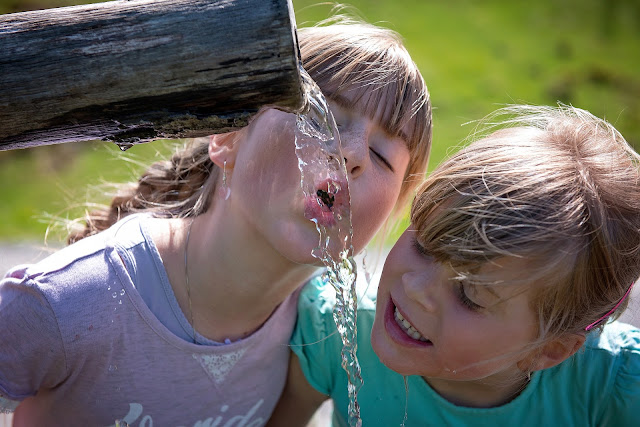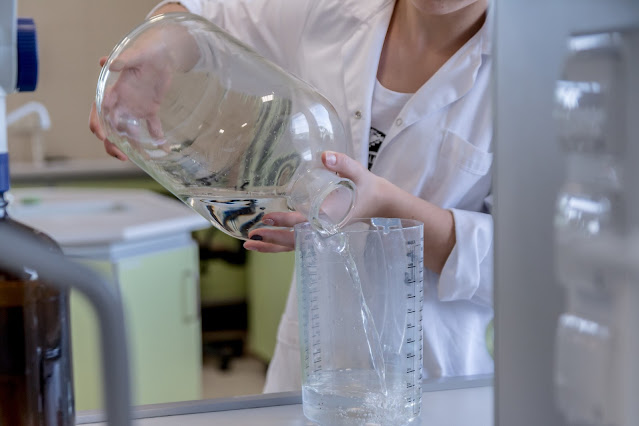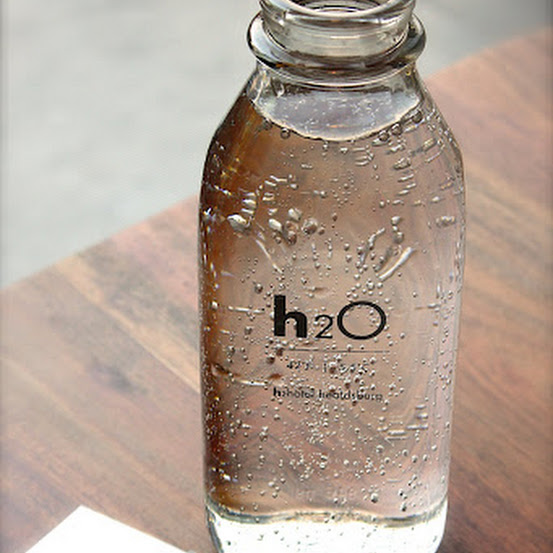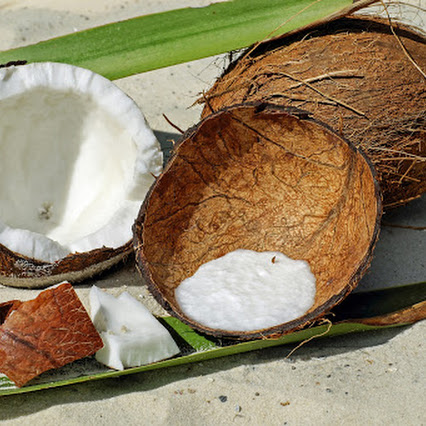Drink Water And Avoid Thirst (The Water You Really Need To Drink)
The Water You Really Need To Drink
This story is essential for The Elemental Guide to Water, a five-section unique report on the medical advantages of water, the science behind seltzer, reality with regards to extravagant H2O, the wellbeing of faucet water, and how much water you truly need to drink.
The notable "8 x 8" rule — you should drink eight 8-ounce glasses of water a day — isn't just overwhelming, it's unwarranted. Truth be told, no one is certain where the thought originated from, and science doesn't uphold it. "It has no premise actually," says Michael Farrell, a teacher at Monash University in Australia, who concentrates how the mind reacts to thirst and different sensations. In like manner, the old guidance to "drink before you're parched" is countered by the most recent examination, as researchers, at last, make sense of how the cerebrum realizes when you're parched, and when you've had enough.
The human body is 55–60% water, changing by a singular (muscle has more water than fat). Blood is 83% water, and 70% of your cerebrum is all wet. Water helps absorption, clears poisons from the liver and kidneys, eliminates abundance sodium from the circulation system, directs internal heat level and pulse, ensures skin and different tissues, and keeps joints greased up.
An individual can endure a long time without food, yet rare in excess of a couple of days without water. Indeed, even mellow drying out, inside hours, can influence mind-set, intellectual capacity, and physical execution examines show.
We lose water continually, by breathing, perspiring, and utilizing the latrine. In any case, water misfortune is a profound factor. On a cool day when an individual isn't dynamic, eight glasses of water could be "well in the overabundance of need, in which case a great deal of water will be discharged" alongside imperative substances like sodium, Farrell says. Then again, an individual practicing on a hot day may require more than eight.
Liquid figures
There is no official U.S. government proposal for how much water to drink. Yet, there are rules for absolute liquid admission from free gatherings. The normal grown-up lady ought to devour about 11.4 cups of liquid every day (a cup rises to 8 ounces) and men ought to expend 15.6 — be it directly from the tap, in different refreshments, or in food, as indicated by a broadly referred to 2004 report from the Health and Medicine Division of the National Academies. Individuals get about 20% of their water from food, the report states. Products of the soil are especially water-loaded — the two tomatoes and watermelon are 90% or more water.
Taking away the 20% of water devoured through food, that implies the normal lady should drink about 9.1 cups of liquid every day, and a man should drink about 12.5. That is actually what the gathering Dieticians of Canada prompt for non-food liquid admission (nine for ladies and 12 for men).
Those assessments can be off for certain individuals, be that as it may, considering distinctive body sizes and types, fluctuating encompassing temperature, and activity levels. Also, there are different admonitions. Ladies who are pregnant or nursing need more than they would something else.
In the interim, more seasoned individuals are especially inclined to drinking not as much as what's prompted. A recent report distributed in the diary Nutrition and Healthy Aging found that 56% of seniors drank less than six glasses of liquid daily, and 9% drank less than three. Another examination has demonstrated that somewhere close to 6% and 30% of individuals more than 65 who are hospitalized are dried out.
Alongside customary water, milk, juice, and other non-mixed drinks check towards your liquid admission, as per the Mayo Clinic and different specialists. Indeed, even espresso checks (the possibility that caffeine gets dried out the body is a fantasy).
All things considered, wellbeing specialists stress the estimation of plain water, the first zero-calorie refreshment. By and large, and got 4.5% a greater amount of their calories from improved beverages. It has for some time been realized that improved refreshments are connected to weight gain and a huge number of issues — from despondency to diabetes and respiratory failures. Drinking all the more plain water prompts lower absolute calorie consumption, as per an investigation of 18,300 grown-ups distributed not long ago in the Journal of Human Nutrition and Dietetics.
Realizing when you're Thirst
You feel thirst when your blood gets excessively pungent, a sign got by particular thirst neurons in the cerebrum, clarifies Christopher Zimmerman, a graduate understudy in neuroscience at the University of California, San Francisco. Clear pee is a sign you're all around hydrated. At the point when pee turns yellow, and particularly in the event that it gets dull, drying out has started. Different manifestations incorporate inconsistent pee and dry or blue lips, alongside messy skin, fast breathing, weakness, fever, and wooziness.
Under typical conditions, the body and mind cooperate to tell you to need water before any of that occurs, Zimmerman says. In spite of the fact that he includes that "each individual's edge for 'feeling parched' is likely somewhat unique, like torment edges. So in risky conditions, such as during extraordinary warmth or effort, it is a smart thought to drink water regardless of whether you aren't feeling parched at this point to ensure that you don't get dried out."
Picture for post
"This is a completely better approach to take a gander at thirst, as we show that it is throat and the gut that assume a functioning part in extinguishing thirst much before your blood gets weakened by the ingested water."
The science behind satiation
A beverage of water enters the stomach rapidly, yet then it must stream into the digestive organs, at that point be consumed by veins that course through the liver, before it can pass on into the remainder of the circulation system, Zimmerman clarifies. Thinking of it as takes around 10 minutes to start changing the body's general hydration, researchers have since quite a while ago asked why a swallow of new water is so tremendously and promptly refreshing and even pleasurable.
It's been known since the 1990s, from a little report on individuals, that the mouth and stomach both impart thirst-satiation signs to the cerebrum. However, the system was a secret. Three years back, Zimmerman and study pioneer Zachary Knight wired up certain mice, whose thirst components are like people. At the point when parched mice drank water, tactile signs dashed to the mind's nerve center, which manages hunger and other essential capacities, closing down thirst neurons quickly, the scientists revealed in the diary Nature.
"This quick sign from the mouth and throat seems to follow the amount you drink and match that to what your body needs," Zimmerman says. In any case, how does the tactile framework know straight water from, state, salt water?
In the analysts' most recent investigation, definite prior this year in Nature, mice drank salt water. Their mind's thirst neurons went tranquil, the same as in the past. However, at that point they exchanged back on, showing an antagonist signal was gotten. Next, the researchers infused new water straightforwardly into the rodents' stomachs, and sufficiently sure, the thirst neurons were deactivated. Salt water infusions didn't deactivate the neurons.
The mind remunerates the drinking of water, yet then there's a gut check, the analysts finished up.
Other examination in mice finds that swallowing water — explicitly the physical movement in the throat, which is unique in relation to the movement of gulping food — additionally imparts satiation signs to the mind's thirst neurons. That review, by Caltech colleague teacher of science Yuki Oka and graduate understudy Vineet Augustine, was distributed in Nature a year ago.
"At the point when the mice tasted the water, these neurons didn't get actuated," Augustine says, "plainly demonstrating that swallowing is fundamental." Their examination additionally appeared, as Zimmerman's, that the gut says something regarding whether the fluid that descended is adequate.
"This is a completely better approach to take a gander at thirst, as we show that it isn't only your cerebrum yet your throat and the gut that assume a functioning part in extinguishing thirst much before your blood gets weakened by the ingested water," Augustine says.
Drinking water likewise triggers the cerebrum to deliver dopamine, the compound that causes individuals to feel great about everything from sex and medications to betting, as per Oka's most recent exploration, distributed May 29 in the diary Neuron.
The consequence: Drinking water doesn't simply satisfy, it fulfills.
The cerebrum can be tricked, nonetheless. An examination in 1997 found that subsequent to working out, individuals drank less water the more carbonated it was. Other exploration indicated shimmering water hydrates just as customary water if an individual beverages an equivalent sum. However, that isn't what normally occurs.
A recent report in the diary PLOS ONE discovered contrasts in intentional liquid admission among exceptionally parched individuals relying upon both carbonation and water temperature. Ninety-eight sound grown-ups were denied of water for 12 hours, at that point they all drank 13.5 ounces of water that was either refrigerated or at room temperature, and either carbonated or not. At that point each of the four gatherings was permitted to drink as much extra room-temperature water as they wished, to gauge how parched they remained. The individuals who at first drank cold water were less parched than the individuals who drank warm water, and the individuals who drank cool, carbonated water were even less parched, which means they drank the least by and large. "Thirst flags a physiological need, yet the suspension of thirst is the consequence of tactile data being incorporated in the cerebrum," said senior creator Paul Breslin, of the charitable Monell Chemical Senses Center.
Precisely why carbonated water makes individuals drink less isn't known, yet one thought is that the air pockets make a feeling of totality in the stomach that demoralizes further drinking.
Finding the correct parity
Drinking a lot of water can be lethal. Water inebriation, called hyponatremia, weakens the body's salt level, making cells swell. The condition is uncommon, however, at any rate, 14 competitors are known to have passed on from it, as indicated.











No comments
Post a Comment